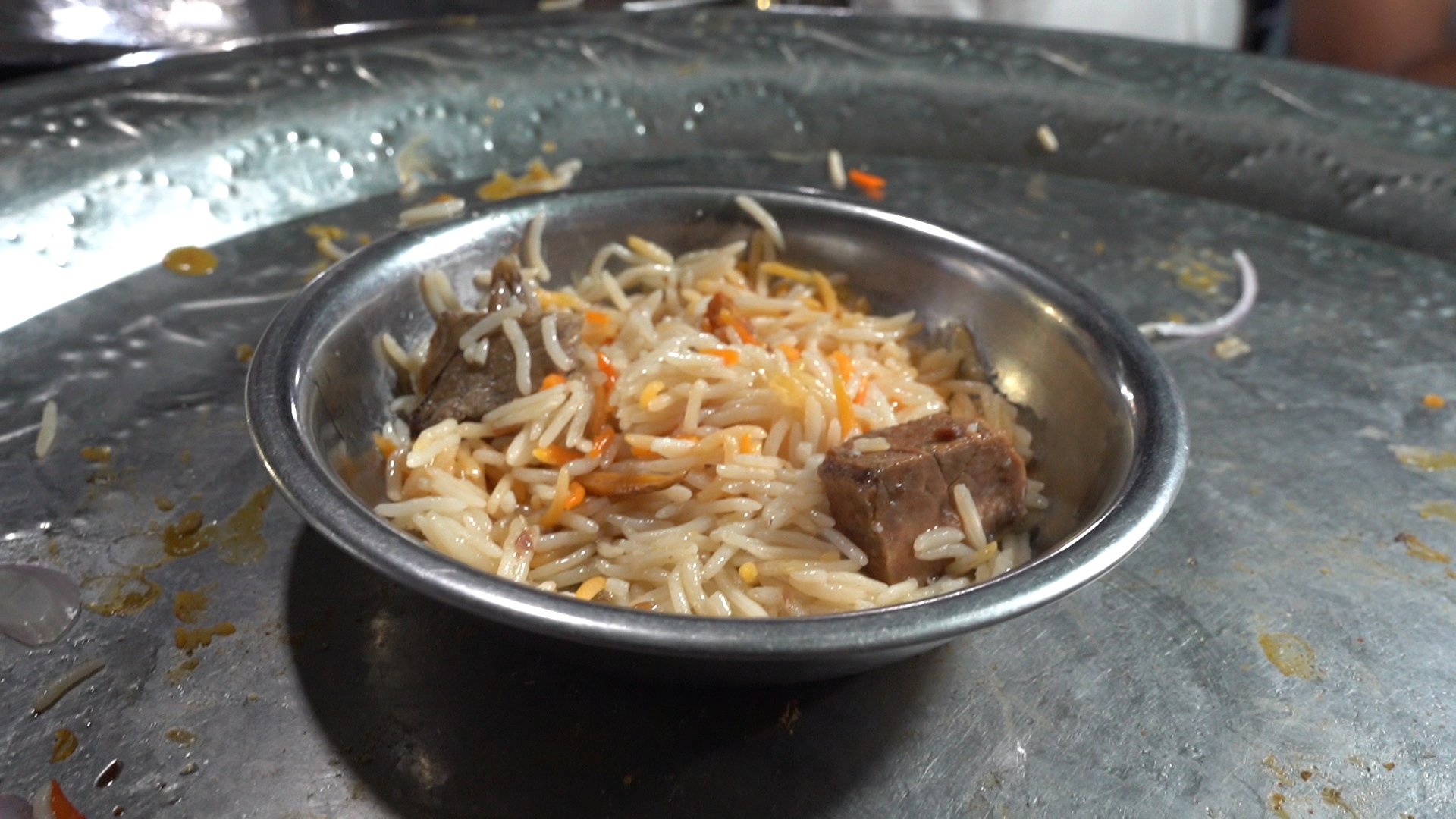Situated in the heart of Bihar’s Mithilanchal region, Darbhanga is one of the oldest and heritage rich cities of this north Indian state. Due to the presence of numerous architectural marvels and glorious heritage of arts and music, it is often referred to as the cultural capital of Bihar. This historical city whose prosperity was at the zenith during the rule of Raj Darbhanga, is also renowned for fishes, foxnut, paan and mangoes cultivation. We were there for a day to explore the most popular food. So let’s see what all we ate during this day long food tour.
We began from Manoj tea stall opposite Bandhan bank. The reticent Manoj Ji had placed a big pot of ghugni on a small table outside the stall. It was served along with either littis or bhunja. We went for the bhunja ghugni combo. It was crisp, spicy, tangy and flavourful. This was followed by a delightful cup of special tea from the same place, which had a little coffee added to it.

Then we walked down the main road and reached Mirzapur to eat at Sardaar Pakodewala. Situated near Gurunanak Singh Sabha Gurdwara, this popular snack point actually doesn’t have a proper name. Here we met the affable and warm Gurmeet ji who spoke about their shop and their signature dish, the pyaji pakoda. It is a unique fritter made with one large onion that was first cut like a blooming lotus flower, then sprinkled with spices and double fried. They served it with chole and chutney. The sweetness and sharpness of the onion complemented the crisp, deep fried besan coating.

After that unique pakoda, we reached this amusing place outside of which it was written Hum Lassi Yahin Peete hain. The huge sofas placed inside made it appear like a furniture shop but the lassi counter outside affirmed its actual identity. Those sofas were the part of the fancy seating arrangements inside the shop. So we grabbed a glass of hand churned lassi and went inside to enjoy it slowly. It was rich, creamy and luscious. The topping grainy khoya added to it’s opulence.

Then we strolled down the adjacent vegetable market, the Kela mandi to reach Suraj Meat House This nondescript eatery is one of the city’s most popular non veg destinations. Darbhanga being a land of fishes, the menu here is dominated by fish dishes. Here we polished off some parboiled rice with rewa fry, sighi curry, jhinga masala and mutton curry. The food was mundane yet memorable. More than the affordable and delicious menu, it was Suraj Ji’s warm and hospitable persona that was a crowd puller.
As we headed further in search of more flavours, we spotted an old man selling Balushahi. This traditional sweet native to Runni Saiyadpur in Sitamarhi Bihar was a syrup laden, cooked ball of chena. Ram kishore Ji, the vendor procures it daily from the above mentioned place and sells it over here at Barabazar.

We then took a paan break and moved on to try small samosas from the famous Jagdish Samosewale near Poonam Cinema Hall. But since the place was closed, we had it from Ravi Kumar Samose Wala. The bite sized samosa served with kadhi and onions made for a hearty snack. Ravi ji was such a humble soul who spoke about his journey in brief.

From there we reached station road to check out an old snack shop named Sri Chakradhari Bhojanalaya, whose dalmoth, sev and nimki were a favourite at Anubhav’ maternal grandparents house. But unfortunately we realized that its glory has drastically faded and now it is barely surviving with limited fares.

With a deep sense of longing we took an auto ride to our last destination Sweet Home Sweet shop Laheriasarai. At this Bengali shop we tried orange, raskadam and chhena jalebi. We also visited their sweet making facility.
This was a gratifying tour where not only did we stuff ourselves with tasty food but also garnered some lovely inspirations from the vendors.







